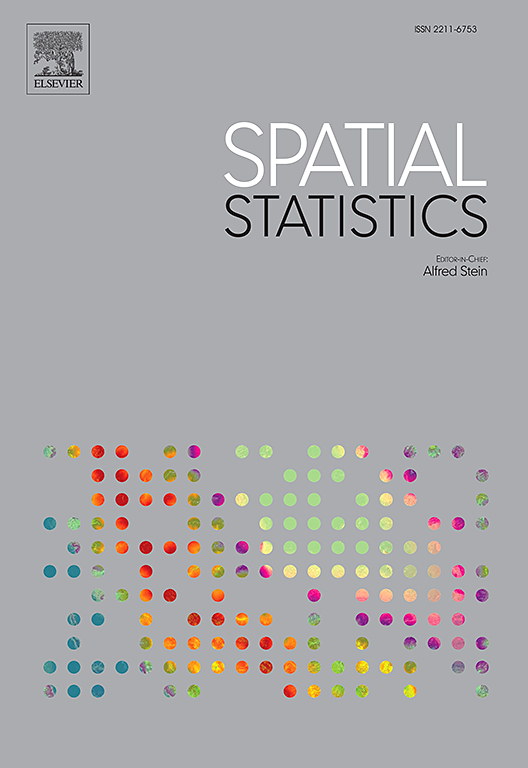Some peculiar families of correlation functions
IF 2.5
2区 数学
Q3 GEOSCIENCES, MULTIDISCIPLINARY
引用次数: 0
Abstract
In this paper a generalization of some families of correlation functions has been proposed; in particular, a generalization of the rational correlation family, as well as a generalization of a subclass of Matérn family have given, together with some relevant properties involving the two classes. Moreover, an extension of the subclass of Matérn family for the two-dimensional and three-dimensional Euclidean spaces has been provided; in addition, the importance of the proposed models for analysing temporal, spatial and, more generally, spatio-temporal data has been underlined, since the same models can be utilized to construct separable as well as non separable correlation functions. It will be shown that these new classes of models are flexible enough to describe both positive and negative correlation structures. On the other hand, with respect to the classical negative correlation models, the proposed families present some features which cannot be found in the same classical negative correlation functions: these relevant properties allow to get new flexible models, which can be helpful for practitioners to accommodate further case studies, as will be shown through some applications.
一些特殊的相关函数族
本文对一些相关函数族进行了推广;特别地,给出了有理相关族的推广,以及matsamyn族的一个子类的推广,以及涉及这两个类的一些相关性质。此外,还给出了二维和三维欧几里得空间的mat族子类的推广;此外,还强调了所提出的模型对分析时间、空间和更一般的时空数据的重要性,因为同样的模型可以用来构建可分离和不可分离的相关函数。这将表明,这些新的模型类是足够灵活的描述正相关和负相关结构。另一方面,就经典负相关模型而言,所提出的家族呈现出一些在相同的经典负相关函数中找不到的特征:这些相关属性允许获得新的灵活模型,这有助于从业者适应进一步的案例研究,正如将通过一些应用程序所示。
本文章由计算机程序翻译,如有差异,请以英文原文为准。
求助全文
约1分钟内获得全文
求助全文
来源期刊

Spatial Statistics
GEOSCIENCES, MULTIDISCIPLINARY-MATHEMATICS, INTERDISCIPLINARY APPLICATIONS
CiteScore
4.00
自引率
21.70%
发文量
89
审稿时长
55 days
期刊介绍:
Spatial Statistics publishes articles on the theory and application of spatial and spatio-temporal statistics. It favours manuscripts that present theory generated by new applications, or in which new theory is applied to an important practical case. A purely theoretical study will only rarely be accepted. Pure case studies without methodological development are not acceptable for publication.
Spatial statistics concerns the quantitative analysis of spatial and spatio-temporal data, including their statistical dependencies, accuracy and uncertainties. Methodology for spatial statistics is typically found in probability theory, stochastic modelling and mathematical statistics as well as in information science. Spatial statistics is used in mapping, assessing spatial data quality, sampling design optimisation, modelling of dependence structures, and drawing of valid inference from a limited set of spatio-temporal data.
 求助内容:
求助内容: 应助结果提醒方式:
应助结果提醒方式:


